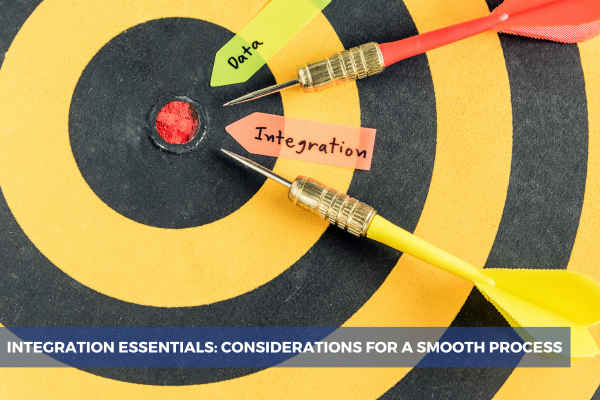
31
OctIn today's interconnected digital landscape, integrating multiple systems like Salesforce with other platforms seamlessly is more important than ever. As businesses evolve and adapt to modern needs, so must their systems. However, a simple 'plug-and-play' might not always suffice. There are several considerations to keep in mind to ensure a smooth and effective integration.
When planning to integrate Salesforce with other systems, it's crucial to ensure there are no limitations that could hinder your business processes. Consider the following:
Subscription Plan: Ensure your plan permits the necessary queries and doesn't restrict the volume of data transferred through the integration platform.
Custom Fields: Confirm there are no constraints related to field types (text, boolean, number), including restrictions on character counts. Also, ensure that field-level security settings allow for the desired import functions.
Administrator Access: Proper integration demands administrative access in both systems.
One Source of Truth: It is best practice to always have the information that is most updated in one system, which will then be updated in the other one when necessary.
It's also essential to determine how often data transfers between Salesforce and the other platform —whether hourly, daily, or weekly—are required. Before implementing, ensure there are no restrictions related to scheduling or real-time synchronization.
If you need to update previously imported data, see if the 'returning' feature is available. This feature ensures that by matching IDs in both systems, you'll update the existing record instead of creating a duplicate one.
Take your time to understand the daily interactions users have with Salesforce and the secondary system. Look into all the ways it's used to ensure no business process is overlooked.
When exporting from one system, ensure that each object and its corresponding fields are mapped to a counterpart in the target system you're importing to.
Ensure that fields crucial for integration, such as address, name, description, date, currency, and numbers, are consistently formatted across both systems.
As business requirements expand, ensure that the Salesforce integration solution you've implemented is scalable and won't require significant changes in the future.
After the implementation, double-check that the import conditions address every potential outcome to prevent any data inaccuracies. Also, confirm the accuracy of data movement across the systems.
System integration, when done right, can streamline business processes, reduce redundancies, and drive efficiency. The points discussed in this article are just a few considerations to keep in mind during Salesforce integrations. While every integration journey is unique, these insights from our team might provide a helpful starting point.
Comments (0)